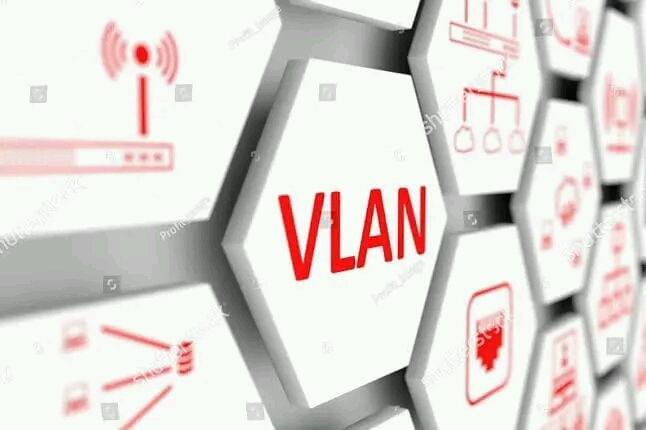What Are The Similarities And Differences Between VPN And VLAN

What Are The Similarities And Differences Between VPN And VLAN
Before we look at the similarities and differences between VPN and VLAN, let us discuss the meaning of both VPN and VLAN.
What Is VPN?
VPN (Virtual Private Network) is a secure connection method that allows users to access the internet or private networks from a remote location, by encrypting data and hiding the user’s IP address.
A VPN is used to provide privacy and security when accessing the internet. It creates a virtual tunnel between the user’s device and the internet, encrypting the data transmitted, which makes it difficult for anyone to intercept or monitor the connection.
This protects sensitive information, such as login credentials, financial data, and other confidential information, from being intercepted by hackers or other malicious actors.

VPNs allow users to bypass internet censorship, geo-restrictions, and access websites or services that may be restricted in their location.
VPNs work by routing the user’s internet connection through a server run by the VPN provider. This server acts as a middleman between the user and the internet, and all data transmitted between the two is encrypted. The VPN server assigns the user a new IP address, making it appear as if the user is located in a different location than they actually are. This allows users to access websites or services that are restricted in their region.
There are many different VPN providers, and they offer various features, such as different levels of encryption, the ability to choose the location of the VPN server, and support for different operating systems and devices.
Some VPN providers also offer additional features such as malware protection, ad-blocking, and the ability to bypass government censorship. When choosing a VPN, it is important to consider factors such as privacy policies, server locations, and the level of encryption offered.
What Is VLAN?
VLAN (Virtual Local Area Network) is a networking technology used to divide a single physical network into multiple isolated logical networks.
VLANs are used to separate broadcast domains and increase security, while allowing multiple networks to coexist on the same physical infrastructure.
VLANs are useful in situations where network administrators need to isolate network traffic for security, performance, or other reasons. For example, a VLAN can be used to separate the traffic of different departments in a company, so that sensitive information can be kept secure. VLANs can also be used to separate the traffic of guest networks from the traffic of the main network, for security reasons. VLANs work by assigning a unique identifier, called a VLAN ID, to each logical network. This allows network devices to identify which traffic belongs to which network, and to forward the traffic accordingly.
VLANs can be created and managed through network switches that support VLAN technology. VLANs are transparent to end devices such as computers, which are unaware of the existence of VLANs. VLAN membership can be determined through the use of port-based or protocol-based tagging. Port-based tagging assigns VLAN membership based on the physical port to which the device is connected. Protocol-based tagging assigns VLAN membership based on the protocol used by the device, such as the 802.1Q VLAN tagging protocol.
VLANs have some benefits over traditional LANs, such as increased security, reduced broadcast traffic, and increased flexibility in network design. However, VLANs can also create more complexity in network design and management, and may require additional hardware and software to implement.
Overall, VLANs are a useful tool for network administrators to manage and organize network traffic, and to increase network security and performance.
What Are The Similarities And Differences Between VPN And VLAN

Similarities Between VPN And VLAN
Network Segregation:
Both VPN and VLAN are used to create separate virtual networks within a physical network.
IP Addressing:
Both VPN and VLAN use IP addressing to route traffic between virtual networks.
Security:
Both VPN and VLAN can improve network security by limiting access to network resources.
Increased Efficiency:
By separating network traffic into different virtual networks, both VPN and VLAN can increase network efficiency by reducing congestion.
Network Scalability:
Both VPN and VLAN can help organizations scale their network as they grow, by allowing them to create new virtual networks as needed.
Remote Access:
Both VPN and VLAN can provide remote access to network resources, enabling users to access the network from outside the physical location.
Cost Savings:
By reducing the need for physical network components, both VPN and VLAN can help organizations save on costs.
Isolation of Resources:
Both VPN and VLAN can isolate network resources and prevent unauthorized access.
Support for Multiple Devices: Both VPN and VLAN support multiple devices, enabling organizations to connect laptops, smartphones, and other devices to the network.
Network Management:
Both VPN and VLAN allow organizations to manage their network more efficiently by providing centralized control over network resources.
Enhanced Privacy:
Both VPN and VLAN can enhance privacy by encrypting network traffic and preventing eavesdropping.
Compliance:
Both VPN and VLAN can help organizations comply with regulations by providing a secure and isolated network environment.
Both VPN and VLAN are commonly used for similar purposes, such as network segmentation, remote access, security, and scalability. However, VPNs and VLANs have different implementations and use different technologies, so they are not identical solutions.
Now, let’s look at their differences
What Are The Similarities And Differences Between VPN And VLAN

Differences Between VPN And VLAN
VPN (Virtual Private Network) and VLAN (Virtual Local Area Network) are two different networking technologies. The main differences between the two are:
Purpose:
VPN is used to securely connect remote users to a private network, while VLAN is used to segment a single physical network into multiple logical networks.
Location:
VPN operates at the network layer (layer 3) of the OSI model, while VLAN operates at the data link layer (layer 2).
Security:
VPN provides encryption for network traffic and offers a secure connection over public networks, while VLAN offers no encryption but provides network segmentation and broadcast control.

Configuration:
VPN requires configuration on both the client and the server side, while VLAN only requires configuration on network switches.
Accessibility:
VPN can be used to access a network from anywhere with an internet connection, while VLAN is limited to the physical network it is created on.
Cost:
VPN often requires the purchase of additional hardware or software and can incur monthly subscription costs, while VLAN implementation is typically part of a network switch’s functionality and does not incur additional costs.
Scalability:
VPN can be difficult to scale as the number of remote users increases, while VLAN can easily be expanded by adding more network switches.
Performance:
VPN can introduce latency and reduce network performance, while VLAN does not have a significant impact on network performance.
Management:
VPN requires centralized management and requires the configuration of each remote client, while VLAN management is typically done through network switches and does not require configuration on individual devices.
Interoperability:
VPN is often platform and device independent, while VLAN implementation may require compatible network switches from the same vendor.
Network Segregation:
VLANs allow for network segregation and isolation, while VPNs do not provide the same level of network isolation.
Access Control:
VLANs offer access control by allowing administrators to define who can access which segments of the network, while VPNs are typically used to provide remote access and do not provide the same level of access control.
Network Visibility:
VLANs provide visibility into network traffic and enable network administrators to monitor and troubleshoot network issues, while VPNs can obscure network traffic and make it more difficult to monitor network activity.
Integration with Firewalls:
VLANs can be integrated with firewalls to provide added security, while VPNs typically require a separate firewall for security.
Availability:
VLANs are more reliable and available as they are part of the physical network infrastructure, while VPNs can be subject to availability issues such as network congestion, security threats, and remote connection failures.
Network Topology:
VLANs are well suited for flat network topologies, while VPNs are well suited for complex network topologies that span multiple physical locations.
IP Addressing:
VLANs typically use static IP addresses, while VPNs can use both static and dynamic IP addresses.
MUST READ : HOW TO STUDY AND GET UNIVERSITY DEGREE IN USA FOR FREE
Network Broadcasts:
VLANs can control network broadcasts by limiting broadcast domains, while VPNs do not provide the same level of control over network broadcasts.
Quality of Service (QoS):
VLANs can provide Quality of Service (QoS) by prioritizing network traffic, while VPNs do not typically provide QoS.
Inter-VLAN Communication: VLANs enable inter-VLAN communication through routers, while VPNs require a separate VPN connection for inter-network communication.
MUST READ : 9 SOCIAL MEDIA APPS THAT PAY YOU FOR YOUR CONTENT
These are some additional differences between VPN and VLAN to consider when choosing a technology for a specific network. Ultimately, the choice between VPN and VLAN will depend on the specific requirements and constraints of the network.
Both technologies have their own advantages and disadvantages and the choice between the two will depend on the specific needs of the network.
SEE ALSO : What is the best way to protect my computer from viruses and spyware?
Hope this article on what are the similarities and differences between VPN and VLAN is helpful?
Comments are closed.